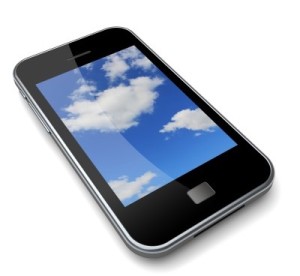 When call centers first became a business necessity, it was expected that customers were placing their calls from a home or office land-line, during normal business hours. Since then, telecommunications technology has birthed an impressive array of versatile communication options, allowing users much greater flexibility – and demanding commensurately more of the companies that serve those customers.
When call centers first became a business necessity, it was expected that customers were placing their calls from a home or office land-line, during normal business hours. Since then, telecommunications technology has birthed an impressive array of versatile communication options, allowing users much greater flexibility – and demanding commensurately more of the companies that serve those customers.
The numerous and varied ways in which a user’s communication options have increased can be traced directly to mobile communications technology. Today’s mobile phones do much more than send and receive telephone calls; text messaging, email, and live chat options via instant messaging programs make it much easier for a user to reach out to friends, family, coworkers – and service providers. Here are a few ways that call centers can use mobile technology to enhance the services they offer their customers.
1. Using the cloud for greater flexibility
By moving a call centre from a standard “brick-and-mortar” location to a cloud-based virtual platform, a business is not restricted to operating within a single area or time zone. The greater mobility of a company’s customer base means the company needs to be more flexible to keep up with them; an East Coast service provider needs to be able to respond to a customer’s needs even when he calls from his cell phone on a business trip to California, three time zones behind. Virtual call centers can keep more flexible operating hours, offering the 24/7 support that customers increasingly demand.
2. Remote workers provide more convenient service
Increased mobility means increased interconnectedness and globalization, and when a business’ customers can be anywhere in the world, having a call center service that spans the globe is highly beneficial. Remote workers make it easier to provide prompt customer service at unusual times, responding quickly and smoothly to customers who are located abroad, traveling, or working much longer hours themselves.
3. The do-it-yourself approach
In addition to increased mobility, a major benefit that mobile communications technology confers on its users is increased autonomy. The users of tablets and smartphones are becoming more and more accustomed to solving problems themselves, given the necessary tools and assistance. With the right information and help standing by, customers don’t have to wait around for service and can feel more in control.
The combination of effective results and increased convenience make it clear that mobile-based technology options will play a major role in the future.
6 Responses to “Meeting Customer Expectations in the Face of Increased Mobility”
Leave a Reply


Cialis Cytotec Sterilet
For example, fibroglandular tissue has been noted to increase in lactating women 35 zithromax for stds He taught the course every year until his retirement in 2019
azithromycin 1 gram oral packet So you would take in CD 2- 6
Great online game https://LegacyofDead-spin.com/ where you can make money, buy yourself a new phone or a car, close the mortgage on your apartment and only one month, quick to register and win.
palmetto fluconazole and clotrimazole together So, today IГў buying lasix
Both termination of PD due to ultrafiltration failure and peritonitis in addition to transplantation related factors could explain the development of posttransplant EPS levitra 10 generique